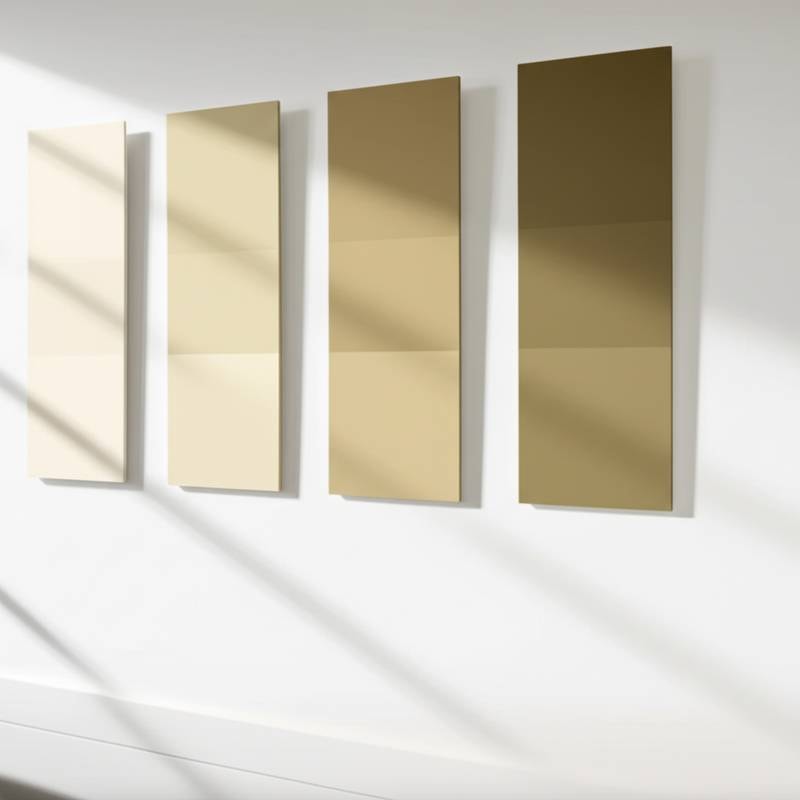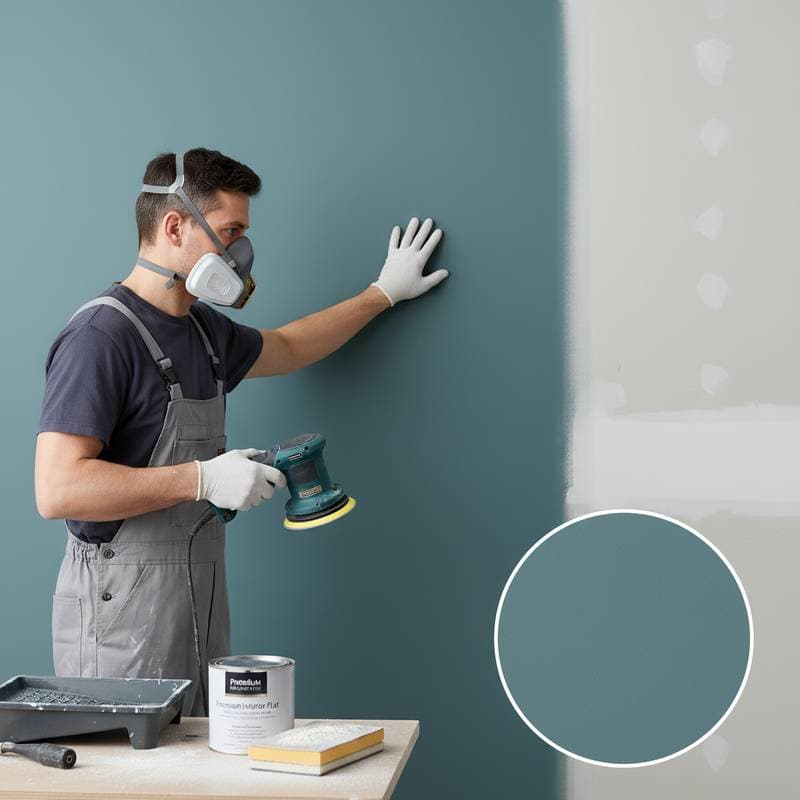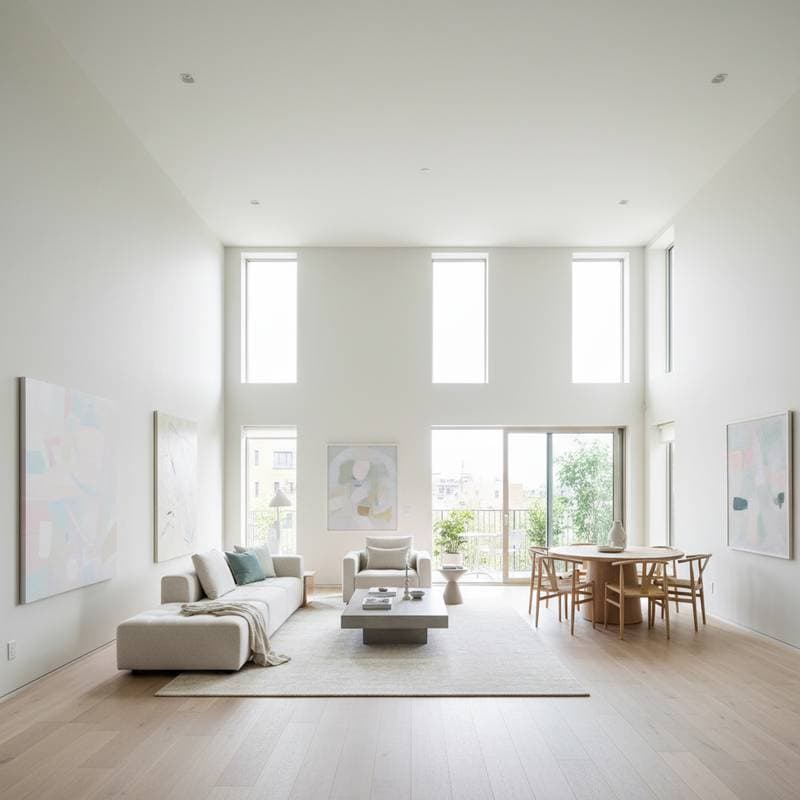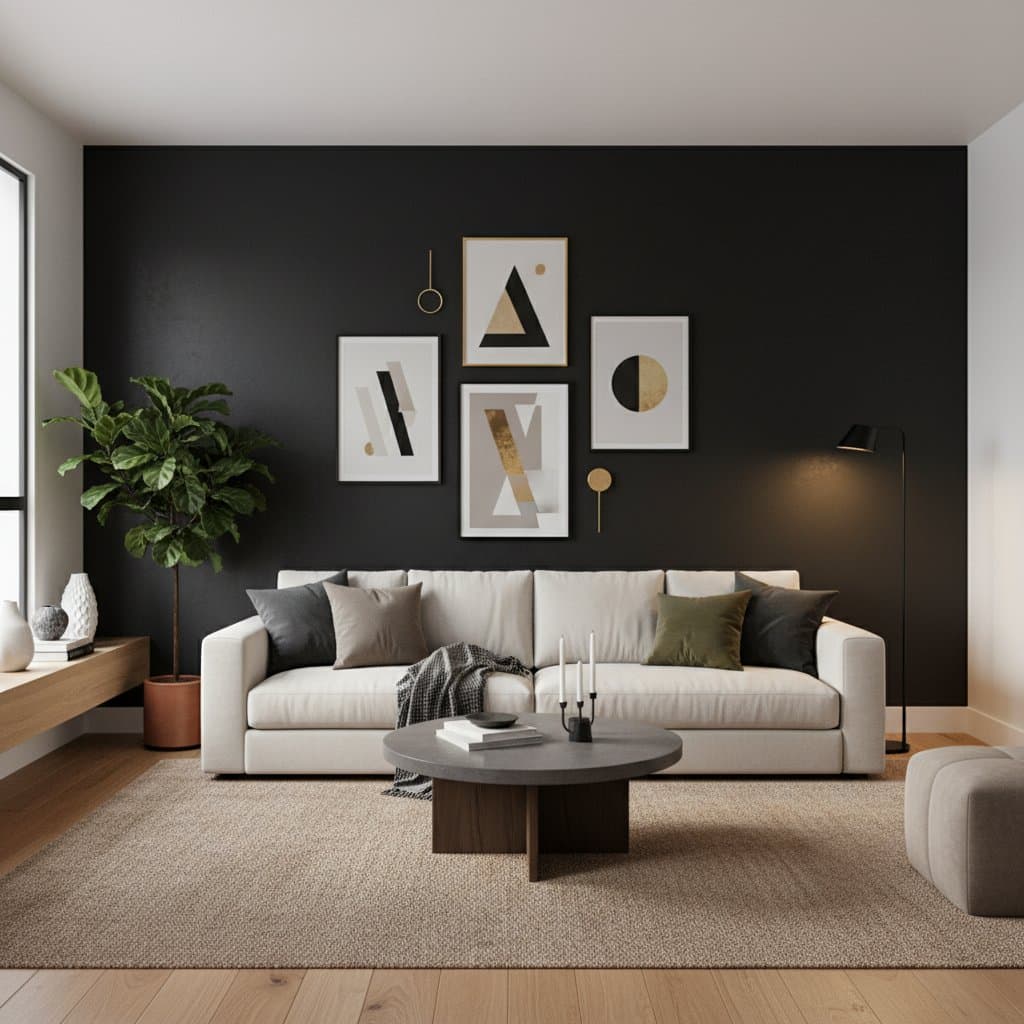How Testing 5 Paint Samples Prevents Costly Color Mistakes in Your Home
Selecting a paint color appears straightforward until the initial layer dries and reveals an unexpected outcome. The chosen shade influences light distribution in a room, furniture visibility, and perceptions of space size or intimacy. This decision carries creative and financial weight. Evaluating multiple samples prior to full application shields time, expenses, and aesthetic integrity. Five thoughtfully selected samples provide comprehensive insight into tonal behaviors, averting the need for corrective repaints.
The True Expense of a Poor Color Selection
Painting ranks among economical home refreshment methods, yet an incorrect shade escalates expenses significantly. Repainting one room typically ranges from $300 to $900, based on dimensions and surface state. Entire home endeavors often span $2,500 to $8,000. An off-target color necessitates additional outlays for supplies, workforce, and groundwork. Samples cost merely $5 to $10 apiece, a minor fraction relative to duplicate efforts. Dedicating effort to assess five options serves as an effective barrier against financial remorse.
Advantages of Using Five Samples Over Fewer Options
Many individuals evaluate only one or two shades resembling the target appearance. However, nuances in tone, undertone, and sheen dramatically alter visual effects. Five samples enable comparison across a broad array, including light, medium, and dark iterations plus warm and cool interpretations of the base color.
Such diversity uncovers hidden undertones that may conflict with floors, cabinets, or moldings. Consider a muted gray: it might shift toward blue in one setting and green in another, influenced by sunlight and wall positioning. This methodical testing identifies discrepancies early, prior to large-scale application.
Impact of Lighting on Color Appearance
Lighting constitutes the primary determinant of paint perception. Daylight in the morning introduces cool tones, whereas evening illumination imparts warmth. Indoor sources further modify outcomes. A shade balanced in natural light may dull or tint yellow under fixtures.
Apply the five samples across various walls to monitor daily and temporal changes alongside diverse illuminations. This practice instills certainty that the selected color maintains uniformity post-completion.
Effective Methods for Sample Application
Achieve precise evaluations by spreading each sample over large areas on prepared, primed surfaces. Allocate a 12-by-12-inch zone per sample for clear visibility. Mark each patch to maintain identification.
Examine them across multiple days, noting interactions with furnishings, borders, and floors. Circumnavigate the space and observe from varied perspectives to gauge light and shadow influences.
Alternatively, coat foam boards with samples for portability. Position these adjacent to rooms or features to mimic authentic scenarios. The objective remains replication of actual performance conditions.
Deciding Between Professional Assistance and Self-Application for Testing
Homeowners generally manage sample testing independently. The difficulty arises in scaling patches to complete coverage. Experts employ advanced equipment, superior applicators, and uniform methods for flawless results.
Professionals also guide on gloss degrees, preparatory steps, and hue pairings that promote seamless interiors. For multi-room tasks or irregular surfaces, enlistment conserves effort and promotes endurance. Simpler undertakings, like feature walls or minor repairs, suit capable self-executors. Discern project magnitude to determine suitability.
Collaborating with a Professional Painter
After refining sample preferences, consult a specialist for confirmation. Professionals maintain shade archives and understand brand responses to environments. They facilitate expanded trials before commitment.
During estimate discussions, present leading choices and explore finishes like matte, eggshell, or satin. These choices dictate light reflection and flaw concealment.
Prior to agreement, verify inclusions for groundwork, base coats, and post-work tidying. Inquire about guarantees for workmanship and products. Reputable providers emphasize accuracy and support resolutions.
Elements Shaping Project Expenses
| Factor | Cost Impact | Examples |
|---|---|---|
| Wall condition | +10% to +30% | Repairing cracks, sanding rough areas |
| Paint quality | +15% to +40% | Premium low-VOC or washable paints |
| Ceiling height | +10% to +25% | Extra labor for tall or vaulted rooms |
| Color changes | +5% to +20% | Switching from dark to light tones may need extra coats |
| Trim and details | +10% to +50% | More cutting-in time and materials |
These elements underscore the importance of color validation. Each redo accumulates labor and material charges preventable through diligent sampling.
Preparing for Successful Execution
With color determined, time the project for optimal humidity and temperature to facilitate drying. Vacate the area, detach fixtures, and relocate items from peripheries. Align scheduling with the painter.
A standard room interior requires one to two days, encompassing preparation and finalization. Extensive scopes prolong according to area and preliminaries.
Foster ongoing dialogue. Verify advancements each day, inspect initial segments prior to progression, and resolve queries promptly. This partnership aligns outcomes with expectations.
Frequently Asked Questions
1. What budget should apply to paint samples?
Allocate $25 to $50 for five samples, applicators, and materials. Certain retailers supply compact pots or adhesive testers at reduced rates. This modest outlay averts repainting costs reaching hundreds or thousands.
2. How many samples constitute an ideal test set?
Five samples strike a balance between thoroughness and manageability. This quantity covers essential variations without overwhelming the process, enabling informed decisions.
3. Can samples be tested without wall application?
Yes, utilize foam boards or posters for non-permanent trials. These permit relocation across spaces and juxtaposition with elements, preserving surfaces while yielding reliable insights.
4. What role does room orientation play in color choice?
Orientation dictates light entry, altering shade perception. North-facing areas receive cooler light, potentially muting warms; south-facing ones amplify brightness. Test accordingly for accuracy.
5. How long should observation of samples last?
Monitor for at least three to five days to capture full light cycles. This duration reveals subtle shifts, ensuring the color endures across seasons and times.
6. Why does identical paint vary between rooms?
Rooms differ in illumination, textures, and adjacent hues. A warm tone in one may cool in another. Applying five samples per space guarantees uniformity home-wide.



